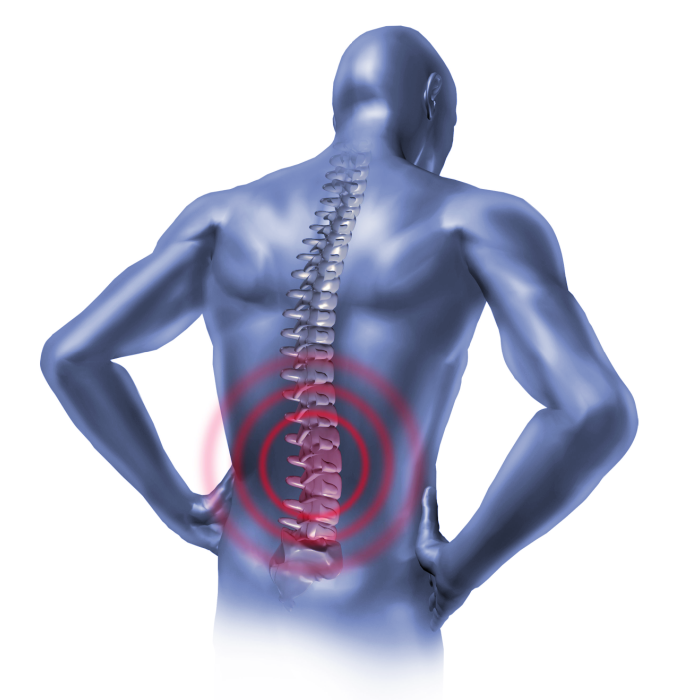Facet Joint Injection
Facet joints are small joints that come in pairs located in your back.
The cervical facet joints are located in the back of your neck, thoracic facet joints in your mid-back, and the lumbar facet joints are in your lower back. Their role is to stabilize your spine and guide its movement. Arthritis, mechanical stress, or injury can all cause pain in these joints in different areas of the back.
Approximately 50% of back pain and 70% of neck pain involve facet joints in some way. Head, neck, shoulder, and arm pain, as well as headaches, can be caused by the cervical facet joints. Pain in the upper or mid-back and chest can be related to the thoracic facet joints. Pain in the hips, buttocks, legs, and lower back can be contributed to the lumbar facet joints.
Facet joint injections are used to diagnose and manage facet joint pain. It is a non-surgical treatment option for facet joint pain, aiming to give you pain relief and reduce the inflammation of the joint.
Keep reading to learn more about facet joint injections and how our pain management doctors in Charleston, SC can help you.
Request Appointment | Contact Us | Meet Pain Doctors
WHAT CAN IT TREAT
Arthritis-related conditions:
- Facet Joint Osteoarthritis: Wear and tear of the cartilage in the facet joints, leading to pain and stiffness.
- Spinal Osteoarthritis: Degeneration of the cartilage in the spine’s joints, causing back pain and discomfort.
- Rheumatoid Arthritis: An autoimmune disease causing inflammation in the joints, including the spine, leading to pain and swelling.
- Ankylosing Spondylitis: A form of arthritis that primarily affects the spine, causing inflammation, pain, and stiffness.
Spinal conditions:
- Degenerative Spondylolisthesis: A condition where one vertebra slips over another, often due to arthritis, leading to back pain.
- Scoliosis: A sideways curvature of the spine that can cause uneven pressure on the facet joints, leading to pain.
Facet joint pain usually comes from inflammation, swelling, or the wearing away of cartilage in these conditions. Facet joint injections can help reduce this pain and inflammation.
RISK FACTORS
General injection risks (rare but possible):
- Allergic reaction: Possible reaction to the drugs or contrast dye used.
- Excessive bleeding and bruising: More bleeding or bruising than expected.
- Infection: Risk of bacteria entering the injection site.
- Nerve damage: Risk of injury to nerves near the injection site.
- Spinal cord injury or paralysis: Rare but serious risk of damage to the spinal cord.
- Vasovagal reaction: Symptoms like dizziness, nausea, and flushing during or after the injection.
Risks specific to cervical (neck) Injections:
- Phrenic nerve palsy: Temporary paralysis of the nerve that helps control breathing.
- Vertebral artery damage: Potential injury to the arteries in the neck.
Risks from corticosteroids used in injections:
- Bone death (osteonecrosis): Risk of bone tissue dying.
- Cataracts: Possible risk with long-term use.
- Decreased bone density: Risk of bones becoming weaker (decreased bone mineral density).
- Increased blood pressure: Risk of hypertension.
- High blood sugar: Possible increase in blood sugar levels (hyperglycemia).
- Hormone imbalance: Potential changes in reproductive hormones.
- Metabolic changes: Increased appetite, weight gain, and fluid retention.
- Psychiatric changes: Possible mood swings, irritability, or insomnia.
- Weakened immune system: Lowered ability to fight off infections (immunosuppression).
These risks are higher with larger doses or repeated corticosteroid injections, and patients with conditions like diabetes, heart failure, or mental health issues should be monitored closely.
POSSIBLE SIDE EFFECTS
- Light bleeding
- Numbness
- Slight bruising
- Swelling
- Tenderness
- Worsening back or neck pain for short period of time
The side effects typically resolve within approximately 48 hours of injection.
WHAT TO EXPECT BEFORE THE PROCEDURE
- Your doctor will review your medical history, discuss benefits and any risks, and answer your questions.
- Talk to your doctor if you have any bleeding disorders or take blood thinners, as they can increase your risk of bleeding.
- If you take blood thinners or medications like aspirin, talk to your primary care physician about stopping these medications before your facet joint injection procedure.
DAY OF THE PROCEDURE
On the day of your procedure:
- Shower and wash your skin with your regular soap.
- Avoid using any lotions or medicated creams near the injection site.
- Wear loose-fitting clothing, including underwear.
- Arrive at your appointment at least 30 minutes early.
- Have someone with you to drive you home after the appointment.
- Bring an updated list of your medications and allergies you may have with you.
- Have your latest imaging studies and reports on hand at the appointment.
Before the procedure begins, your nurse will ask any screening questions, go over your medications and allergies, and prep you for the injection. This procedure may require an IV. Our team will also check your blood pressure and blood sugar to ensure they are in safe ranges before your injection.
During the procedure:
- Our team will place an IV in your arm to give you relaxation or sedation medication.
- We will have you lie down on the X-ray table, and thoroughly clean the skin over the area of your spine being treated.
- A numbing agent will be applied to the injection site – the numbing medicine may sting for a few seconds.
- Your pain management physician will use x-ray guidance to carefully insert a very small needle into the joint.
- Lastly, a small combination of anti-inflammatory cortisone and a numbing agent will slowly be injected into the joint.
AFTER THE PROCEDURE
Here’s what to expect after your procedure:
- Test pain relief: Approximately 20 to 30 minutes after the injection, attempt carefully moving in ways that typically cause you pain. You may or may not feel relief right away. This will depend on if the injected joints were the main cause of your pain.
- Possible side effects: For a few hours after, the treated area may feel a bit weak. You may experience some pain in the days after as the numbing agent wears off before the cortisone kicks in.
- Pain management: In the first two to three days following the injection, ice is the most effective pain management tool. You should begin to feel better two to five days after the injection. If you’re not seeing improvement after 10 days, it’s likely the source of your pain is not the facet joint.
- Medication and activity: You can return to taking your regular medication, but limit pain medication for the first four to six hours to help your pain management team get the most accurate diagnostic information. On the day of the injection, avoid driving and strenuous activities. You can return to your regular activities the next day and gradually increase your exercise routine as your pain improves over the next couple of weeks.
- Follow-up: If the procedure confirms the root cause of your pain, your pain management physician may schedule a “confirmatory” injection. This will help your team ensure the correct nerve was identified, so they can best continue your care.
Feel free to ask your doctor or pain management team at Pain Specialists of Charleston if you have any questions or concerns.
WHEN SHOULD I SEE A PAIN PHYSICIAN
If you’re experiencing chronic back pain, seek the help of a pain management physician. At Pain Specialists of Charleston, our board-certified pain management physicians will examine, diagnose, and treat the root cause of your pain. We’re focused on helping you reclaim your quality of life, not just treat your symptoms.
Our pain management clinic is open five days a week, and we are accepting new patients. Schedule your appointment with us today – no referral needed!
MEET DOCTOR EDWARD M. TAVEL, JR., MD
- Over 20+ Years of Specialty Training
- Double-Board Certified in Anesthesiology and Pain Management
AWARDS & ASSOCIATIONS

AS SEEN ON

CONDITIONS WE MANAGE
- Knee Pain
- Chest Pain
- Shoulder Pain
- Back Pain
- Hip Pain
- Neck Pain
- & More
TREATMENTS WE OFFER
At Pain Specialists of Charleston, our board certified team offers pain management treatment in form of:
- Epidural Steroid Injection including cervical, thoracic and lumbar injections
- Joint Injections including knees, shoulders and hips injections
- Caudal Epidural Injection
- Hip Joint Injection
- Lumbar Sympathetic Block
- Facet Joint Injection
- Medial Branch Block
- Radiofrequency Ablation (Rhizotomy)
- Sacroiliac Joint Injection
- Discography
- Neurostimulation, also known as Spinal Cord Stimulation
- Stellate Ganglion Block
- Transforaminal Selective Nerve Root Block Injection
- Medical Massage Therapy
- Clinical Trials
- …and MORE!

ABOUT PAIN SPECIALISTS OF CHARLESTON
At Pain Specialists of Charleston, our mission is to provide you with relief from your chronic pain through the latest, most innovative pain management treatments available. Whether you’re suffering from back pain, whiplash, or anything in between, we can help you get back to feeling like yourself once again.
Plus, no referral is necessary!
At our pain management clinic, our experienced team approaches your pain through a variety of services to best meet your needs. This includes anesthesiology, neurology, psychology, and nursing. Our providers believe in collaborating with your healthcare team – your primary care physician, specialists, chiropractor, physical therapist, and especially you, the patient, to bring you the care you need.
Our private practice is powered by a talented, carefully selected leadership team.
Request Appointment | Contact Us | Meet Pain Doctors
FAQs
Who should not get facet joint injections?
If you have any of the following conditions, facet joint injections should be avoided due to the increase risks involved:
- Active infection (systemic or local)
- Bleeding disorders
- Allergies to medications used or imaging contrast
- Progressive neurological conditions
- Pregnancy
Talk to your doctor about your medical history to determine if facet joint injections are right for you.
How painful are facet joint injections?
You may experience a brief stinging or burning sensation, which will cease in about 15 seconds. Your pain management team will administer numbing agents and, in some cases, local anesthesia. Discuss managing pain levels during the procedure with your doctor prior to the injection.
Are you sedated for facet injections?
While sedation isn’t always necessary during a facet joint injection, you can talk to your doctor about relaxation medicine or sedation if you’re anxious about your injection. The entire procedure typically takes around 15 to 30 minutes.
Is a facet joint injection the same as a steroid injection?
Facet joint injections and steroid injections deliver similar relief – both are steroidal injections and administer nerve block medication to the spine. Facet joint injections are specifically applied to the facet joints in the back and are used to diagnose and treat spinal pain.
Are facet injections worth it?
The goal of facet joint injections is to reduce inflammation and diagnose the main source of your back pain. If you are experiencing chronic back pain that may be caused by a facet joint, your pain management physician may recommend these injections to provide relief and get to the root of the problem.
How successful are facet joint injections?
Facet joint injections have shown to relieve pain and improve mobility in about 50% to 75% of patients who receive them. However, results can depend on individual factors like disease severity. Extent of relief and the duration can vary from patient to patient.
Can I return to normal daily activity after a facet joint injection?
Immediately following your injection, avoid driving and strenuous activities. The day after, you can return to your regular activities in moderation, and gradually increase your activity levels over the next couple of weeks following the procedure.
For at least 48 hours following the injection, it is recommended to avoid activities that involve being submerged in water, like swimming, soaking in the bathtub, or hot tub to reduce your risk of infection.
How long do the results last?
The duration and the extent of the relief from the facet joint injections varies among patients. Results can depend on diagnostic accuracy and the type of the injection. Typically, injections containing both corticosteroids and anesthetic medication can offer patients relief for approximately two to four months, or longer for some.
How common are facet joint pains?
Studies have shown that 15% to 45% of low back pain can involve the facet joints. These studies have not included age-related prevalence of facet joint neck pain, although the prevalence of facet joint disease does increase with aging. Facet joint pain is very common and our pain management physicians at Pain Specialists are here to help through non-surgical interventions.
What are facet joints?
Facet joints are the small pairs of joints that connect the vertebral bones of the spine. Each vertebral level (cervical, thoracic, and lumbar) has their own sets of facet joints. These joints aid in both the spine’s flexibility and stability, allowing your back to bend and twist comfortably and prevent excessive motion.


